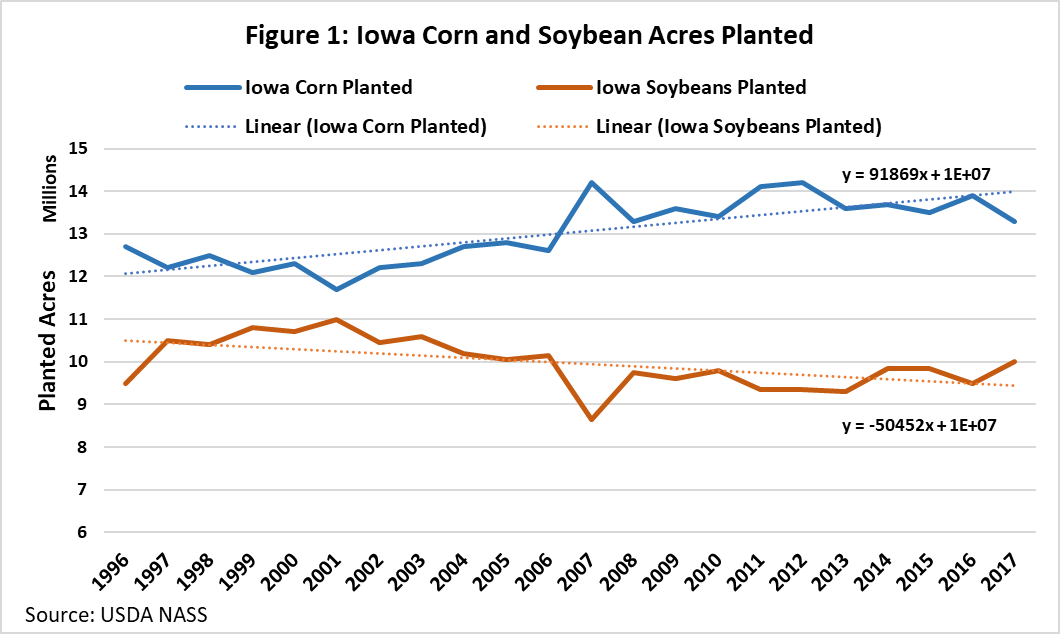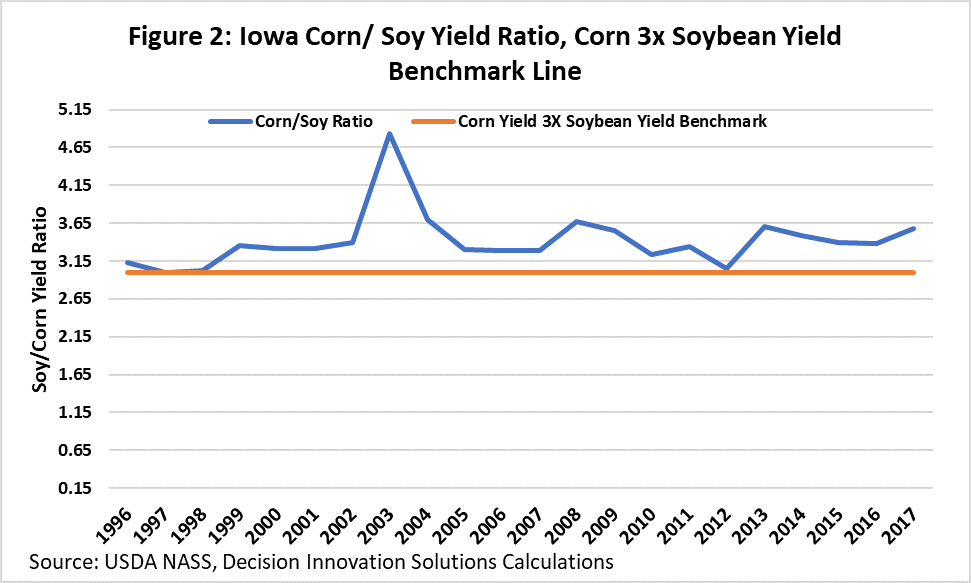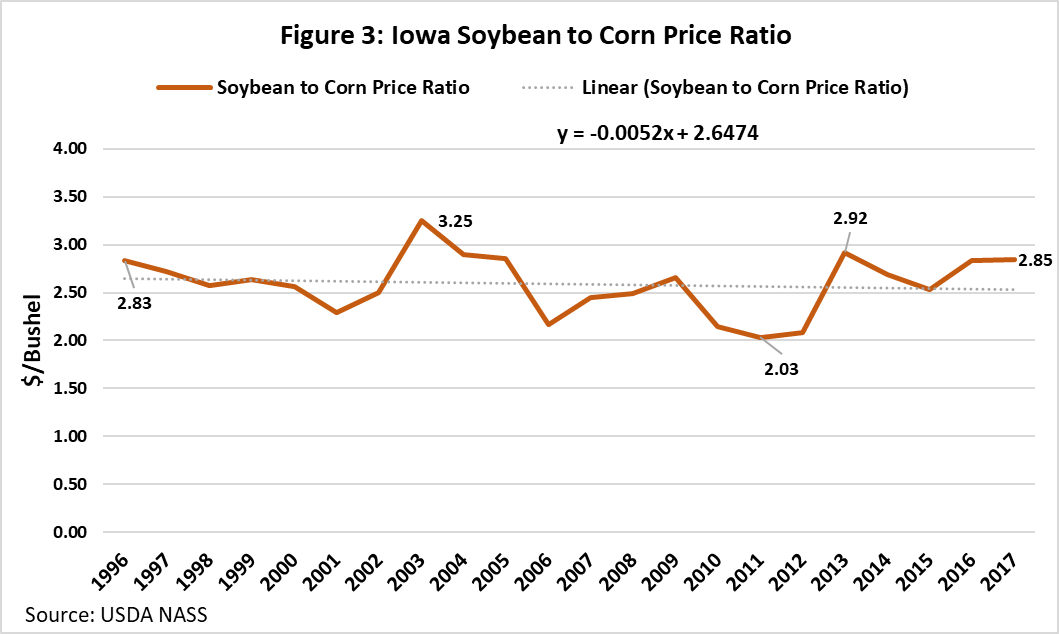Trends in Iowa Corn and Soybean Acreage since 2001
Author
Published
5/31/2018
After about 50 years of growth, soybean acreage in Iowa peaked in 2001 at 11 million acres. Since that peak, soybean acreage in Iowa has declined by about 50,000 acres per year, although it seems to have stabilized in recent years between 9 and 10 million acres. Corn acreage in Iowa has increased by approximately 90,000 acres per year since 2001, and for now has fluctuated between 13 and 14 million acres. For the state as a whole, corn acreage in 2017 was 13.6% more than in 2001. For soybeans, statewide acreage in 2017 was 9.1% lower than in 2001. (See interactive map of Iowa county acreage at bottom)

Why the acreage changes?
Two major drivers of the acreage change during the last 15 years are yield increases and legislative decisions. An increase of corn yields relative to soybean yields. Historically, corn yielded about 3 times soybeans in Iowa. But more recently, corn has been yielding between 3.0 to 3.6 times soybean yields on a consistent basis. This uptick in corn yield versus soybean yield began about 1996 and has continued throughout the past 20 years. Ethanol legislation in 2005 and 2006 caused a visible but brief bump in corn planting, and a short-lived trough in soybeans. This was part of the reason for a jump in corn (and soybean) prices received around the same time period. Many factors play into the fluctuations in both prices and acreage. But perhaps yield, or more specifically, the yield ratio between corn and soybeans is one of the stronger indicators for at least planting decisions.

Iowa Soybean to Corn Price Ratio
The soybean to corn price ratio shows that on average soybeans are 2.59 times higher in price compared to corn. With the most recent peak occurring shortly after corn and soybean acreage began to diverge in Iowa in 2001.

Iowa County Level View of Acreage Changes
Individual counties have shown greater variation in corn and soybean acreage changes. Specifically, on the soybean side of the story there are significant drops in soybean acreage between 2001 and 2017. These drops in soybean acreage are focused on Northern Iowa where decreases were as high as 37 percent. Corn acreage only decreased in Polk and Mills Counties, likely a result of urban sprawl. Corn acreage increased the most in Southern Iowa counties where acreage increased as much as 105 percent in those 16 years. Likewise, soybeans acreage either remained the same or increased up to 79 percent in some southern Iowa counties.
In both corn and soybeans, it is important to note that there are large percentage increases in acreage in the southern counties of Iowa. This reflects a significant return of Conservation Reserve Program (CRP) acres back to crop production in those counties. This highlights to what degree the CRP program was adopted in southern Iowa, and how it affects crop production as it goes in and out of CRP, in this case as cropland leaves CRP and goes back into production. Conclusion For both corn and soybeans, genetic advancement has been the primary reason for yield increases. Farmers can yield relatively more per acre with corn; decisions on acreage allotments often take these types of factors into consideration. Additionally, as markets fluctuate there are many reasons for acreage changes, genetics are not the only reason; legislative changes, commodity prices, international production. soil conservation and many other factors can play into these decisions. Significant changes have been occurring across Iowa with corn increasing and soybeans decreasing in the north, according to data from the USDA. Overall the amount of corn being planted has remained higher than soybeans, however, the acreage gap between corn and soybeans has slimmed down in recent years. The acreage gap has shrunk from corn leading by 1.6 million acres in 2001, to corn still leading but decreasing to 483 thousand acres in 2017. Therefore, Iowa’s acreage has fluctuated significantly at the county level, but overall acreage is both growing and becoming closer to a one-to-one ratio. What is being viewed is the shuffling of acres within the U.S. while total U.S. acreage slowly increases over time. Additionally, in 2001 Iowa had 700 thousand more acres of corn than soybeans, while Iowa in 2017 had 3 million more acres of corn than soybeans.Want more news on this topic? Farm Bureau members may subscribe for a free email news service, featuring the farm and rural topics that interest them most!